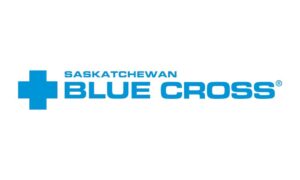Florida and Louisiana in crisis – a tale of two states

The current numbers account for around $307 billion of exposure, and around 10% of all the state’s homeowners’ policies – making it Florida’s largest homeowners’ insurer.
“We’re now averaging around 5,000 new policies a week, and that’s net,” Michael Peltier, Citizens media relations manager, told Insurance Business.
The prognosis is not good – the Insurance Information Institute’s Mark Friedlander, corporate communications director, said that “so many private insurers are in such an unstable condition today that we could see numerous Florida private insurers fail if we were to see a significant storm strike the state during hurricane season.”
Read more: Is the largest private insurer failure in P&C history coming?
Louisiana is also facing problems. Southern Fidelity’s failure left tens of thousands of policyholders looking for a new provider, and it has also had to contend with the solvent exit of Maison, with owner Fed Nat leaving the market to focus on its struggling Floridian business, as well as the failures of Americas and Lighthouse.
Around 60,000 policyholders are now on its insurer of last resort, also named Citizens, and the numbers could more than double within the next two months, according to Jeff Albright, CEO of the Independent Insurance Agents & Brokers of Louisiana.
Premiums in both states have skyrocketed to well above the national average – and, unlike in Florida where Citizens coverage is typically cheaper due to a rate cap, those on Louisiana’s Citizens are likely to find themselves paying even higher rates than in the commercial market.
Read more: Louisiana and Florida insurance markets in danger ahead of Atlantic hurricane season
The last resort provider has been scrambling to update its systems to cope with an influx of policyholders after requests left it overwhelmed, with the state having had to extend its deadline to apply for cover. Louisiana’s insurance commissioner Jim Donelon told a press conference this month that Citizens was in the process of bringing in expanded IT hardware to help it cope with the onslaught.
While there are similarities between the gulf coast states – both have coastal exposure, both are at risk of hurricanes and have in the past faced up to vast damage from storm events, and both are facing hits from some of the same carrier exits – sources were adamant that Louisiana’s issues stem from recent storms, while Florida is suffering a “man-made crisis” stemming from a torrent of insurance litigation.
Storm damage
“If we have another major storm this year, I’m afraid it’s going to be devastating,” said Louisiana’s Albright.
Louisiana has suffered from a stream of hurricane hits in the past couple of years, with Laura, Delta and Zeta hitting the state in 2020, followed by Ida in 2021.
Read more: Louisiana legislators battle to tackle in-crisis homeowners’ market
“That kind of hurricane activity, both the number of storms and the number of claims, there was something in the order of 800,000 claims in those two years, with something approaching $25 billion in paid losses – that’s the primary reason that insurers are pulling back from the Louisiana market,” said Albright.
“The secondary reason is that we’ve had five insolvencies of coastal homeowners’ companies as a result of the historic hurricane claims. And so all of a sudden, we’ve got about 80,000 homeowners’ policies on the street looking for a home and carriers are afraid of trying to soak up all that business.”
Legal wrangling
Florida, meanwhile, has not experienced a major storm since 2018’s Hurricane Michael. However, there is another factor at play: the legal environment.
Read more: Firm predicts $6 billion-$10 billion in insured losses from hurricane
“Ours is very much a man-made problem that was […] driven entirely by the perverse incentives that are built into our marketplace, our third parties to get involved in the claims process,” said Kyle Ulrich, Florida Association of Insurance Agents CEO.
Florida independent insurance agents have had to rehome 269,433 policies of insolvent insurers since 2019, according to figures from the broker association boss. This does not include “at least another” 50,000 policies that have had to be replaced as a result of Office of Insurance Regulation consent orders where a company has been allowed to non-renew large blocks of business to keep itself afloat.
June reinsurance renewals outcomes can offer a glimpse into the gulf between the issues facing the two states. Munich Re and Swiss Re recently cut property capacity for Florida by 50% to 80%, and at least one reinsurer targeted double digit price hikes, according to S&P Global.
“I’ve heard that Louisiana didn’t have the same type of reinsurance capacity issues that Florida did this renewal cycle – and most of that is due to the fact that they were able to quantify what those losses were: it was cat losses, they got hit by crossing for very large storms and a two-year period, and that can happen, you can price for that,” Ulrich said.
“What reinsurance can’t price for is the litigation that happens in Florida, and the unknown that goes along with that.”
Read more: Florida property prognosis “better” but challenges remain
The Floridian insurance market accounts for 79% of America’s homeowners’ insurance litigation, but only 9% of claims, according to the Florida governor’s office.
Issues at play include assignment of benefits (AOBs) – wherein third parties can take over insurance claims and negotiate or file lawsuits – an inundation of potentially fraudulent roofing repair schemes, and, according to ratings agency Demotech president Joe Petrelli, an “inducement to litigate”.
“The dilemma today, is in 2016 Florida passed a one-way attorney fee statute – and that one-way attorney fee statute was basically if an insurance company was being obstinate or being unreasonable on the amount of a claim and you went to court sued that company, the attorneys would be entitled to extra fees,” Petrelli said.
This has led to a spike in legal actions and put fear into insurers since 2016 – with a one cent claim valuation difference enough to put carriers at risk of paying extra, according to Petrelli.
Lawmakers respond
Recent moves by the legislature, following a heated special session in May, have sought to limit AOBs and brought in new rules on roofing repairs – but Demotech’s Petrelli said he did not believe the measures went far enough.
“The problem comes in when the attorneys get involved, and the attorneys start taking out monies that are intended for claimants, and that’s why it’s a totally manmade issue,” Petrelli said.
“It’s tragic, because the market will collapse under the weight of the litigation.”
Louisiana lawmakers have also been working to patch up the market, with new laws to encourage capacity into the state, bulk up solvency requirements, bring in insurer contingency planning, and build a more transparent and streamlined claims process set to come into force.
Time will tell whether fresh legislation will have the desired effect, sources in both states said – but for now, while the markets face up to their individual challenges, one thing is clear: with yet another above average hurricane season predicted, both are already in crisis.




